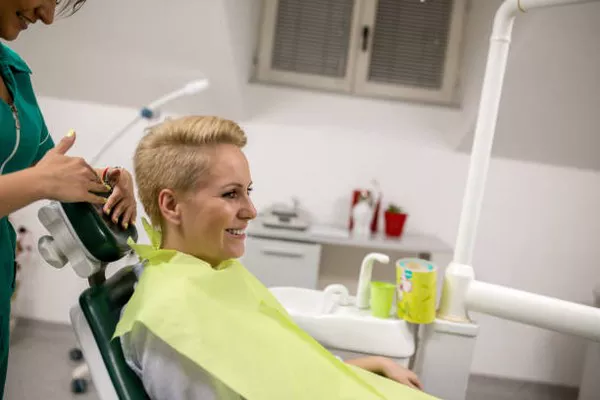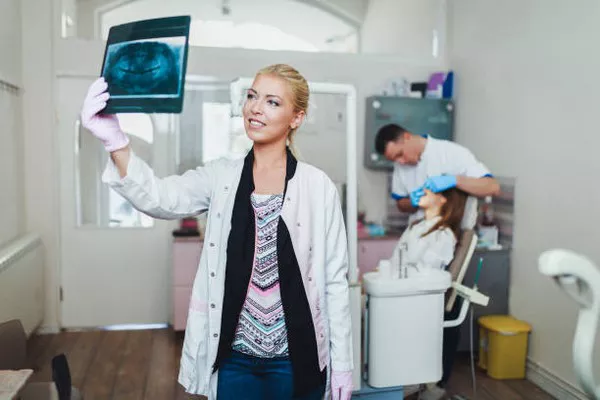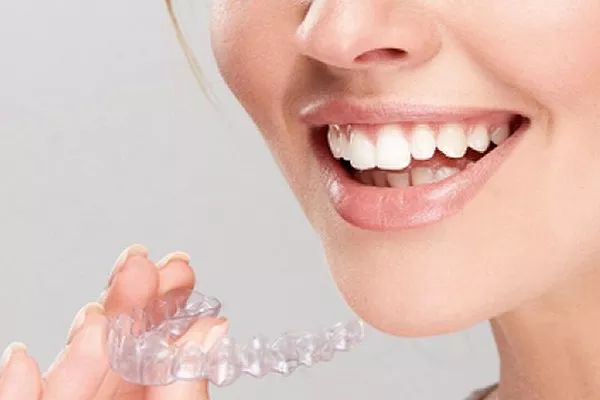In the pursuit of a brighter, more radiant smile, many individuals turn to teeth whitening treatments to combat stains and discoloration. Among the myriad of options available, white light teeth whitening has gained popularity for its purported ability to enhance the brightness of one’s teeth using LED lights and whitening agents. But does this method truly live up to its promises? In this comprehensive exploration, we delve into the mechanism, effectiveness, safety, procedure, pros and cons, duration and frequency, comparison with in-office treatments, and the importance of consulting a dental professional before embarking on any whitening regimen.
Explanation of White Light Teeth Whitening
White light teeth whitening is a process that combines the use of LED lights with whitening agents to lighten the color of teeth. The procedure typically involves applying a whitening gel containing hydrogen peroxide or carbamide peroxide to the surface of the teeth, followed by exposure to a specialized LED light. The light activates the whitening agents, accelerating the chemical reaction that breaks down stains and discoloration, thereby brightening the teeth.
Hydrogen peroxide and carbamide peroxide are commonly used in teeth whitening products due to their oxidizing properties, which help to break apart molecules responsible for staining. When activated by the LED light, these agents penetrate the enamel and dentin layers of the teeth, targeting stains and producing a whiter appearance.
Effectiveness of White Light Teeth Whitening
The effectiveness of white light teeth whitening can vary depending on several factors, including the severity and type of tooth discoloration, as well as individual differences in enamel thickness and sensitivity. Generally, this method tends to yield better results on teeth that are yellow-toned rather than those with brown or gray hues.
Numerous studies have investigated the efficacy of LED teeth whitening systems, with many reporting significant improvements in tooth color after treatment. However, it’s important to note that results may not be uniform across all users, and some individuals may experience more dramatic whitening effects than others.
Procedure of White Light Teeth Whitening
The procedure for white light teeth whitening typically involves several steps:
Preparation: The mouth is prepared by ensuring the teeth are clean and dry before applying the whitening gel.
Application of Whitening Gel: A thin layer of whitening gel containing hydrogen peroxide or carbamide peroxide is applied evenly to the surface of the teeth using a brush or tray.
Activation with LED Light: Once the gel is applied, an LED light is positioned in close proximity to the teeth to activate the whitening agents. The light exposure usually lasts for a specified duration, typically around 15-20 minutes per session.
Rinse and Repeat: After the designated treatment time, the whitening gel is rinsed off, and the process may be repeated for additional sessions as needed to achieve the desired level of whitening.
Safety of LED Teeth Whitening
When performed according to the manufacturer’s instructions, LED teeth whitening is generally considered safe for most individuals. Unlike UV light, which has been associated with potential risks such as tissue damage and increased sensitivity, LED lights emit a lower intensity of light and are therefore considered a safer alternative.
However, some potential side effects may occur, particularly if the whitening gel comes into contact with the gums or soft tissues of the mouth. These side effects may include temporary tooth sensitivity, gum irritation, or mild discomfort during or after treatment. It’s essential to follow the recommended usage guidelines and consult with a dental professional if any adverse reactions occur.
Pros and Cons of White Light Teeth Whitening
Like any dental procedure, white light teeth whitening has its advantages and disadvantages:
Pros:
- Convenience: White light teeth whitening can often be performed in the comfort of your own home, making it a convenient option for individuals with busy schedules.
- Effectiveness: Many users report noticeable improvements in tooth color after using LED whitening systems, especially when combined with professional-grade whitening gels.
- Affordability: Compared to professional in-office treatments, at-home LED whitening kits are generally more affordable and accessible to a wider range of consumers.
Cons:
- Tooth Sensitivity: Some individuals may experience temporary tooth sensitivity or discomfort during or after whitening treatment, particularly if they have sensitive teeth or gums.
- Gum Irritation: Improper application of the whitening gel or prolonged exposure to the LED light may lead to gum irritation or inflammation.
- Variable Results: The effectiveness of white light teeth whitening can vary depending on factors such as the type and severity of tooth discoloration, as well as individual differences in enamel composition and sensitivity.
Duration and Frequency of White Light Teeth Whitening
The duration of whitening effects from LED treatments can vary from person to person, with some individuals experiencing results that last several months, while others may require touch-up treatments more frequently. Factors such as diet, oral hygiene habits, and lifestyle choices can also impact the longevity of whitening results.
In general, most manufacturers recommend waiting at least a few weeks between whitening sessions to allow the teeth and gums to recover fully. Overuse of whitening products can lead to increased tooth sensitivity and potential damage to the enamel, so it’s essential to follow the recommended usage guidelines and consult with a dental professional if unsure.
Comparison with In-Office Treatments
While at-home LED whitening kits offer convenience and affordability, professional in-office treatments administered by a dental professional often yield more immediate and dramatic results. In-office whitening procedures typically involve higher concentrations of whitening agents and may incorporate additional techniques such as light-activated or laser-assisted whitening for enhanced effectiveness.
However, in-office treatments are typically more expensive and may require multiple appointments to achieve optimal results. Additionally, some individuals may prefer the convenience and privacy of at-home whitening kits, despite potentially longer treatment times and less intensive whitening effects.
Consultation with a Dental Professional
Before beginning any teeth whitening treatment, it’s essential to consult with a dental professional to ensure that it is appropriate for your dental health and to discuss any potential risks or concerns. A dentist can evaluate your oral health, assess the cause of tooth discoloration, and recommend the most suitable whitening option based on your individual needs and preferences.
Furthermore, individuals with pre-existing dental conditions such as gum disease, tooth decay, or dental restorations (e.g., crowns, veneers) may require special considerations when undergoing whitening treatment to avoid complications or damage to existing dental work.
Conclusion
White light teeth whitening can be an effective and convenient option for brightening your smile and reducing tooth discoloration. By understanding the mechanism, effectiveness, safety considerations, procedure, pros and cons, duration and frequency, comparison with in-office treatments, and the importance of consulting with a dental professional, you can make informed decisions about incorporating whitening treatments into your oral care routine. Remember to prioritize oral health and seek professional guidance to ensure a safe and successful whitening experience.
FAQs About Teeth Whitening Lights
1. Do teeth whitening lights really work?
Teeth whitening lights, particularly those using LED technology, can enhance the effectiveness of whitening treatments by activating the whitening agents in the gel. While the lights themselves do not whiten the teeth directly, they accelerate the chemical reaction that breaks down stains and discoloration, leading to brighter results. However, the efficacy of whitening lights may vary depending on factors such as the type and severity of tooth discoloration, individual differences in enamel composition, and adherence to the recommended treatment protocol.
2. How long does it take for teeth whitening light to work?
The time it takes for teeth whitening lights to produce visible results can vary depending on the specific whitening treatment being used, as well as individual factors such as the extent of tooth discoloration and the concentration of whitening agents in the gel. In general, many at-home whitening kits recommend using the LED light for approximately 15-20 minutes per session, with noticeable improvements typically observed after several consecutive sessions. However, it’s essential to follow the manufacturer’s instructions and be patient, as whitening results may become more apparent with continued use over time.
3. What are the side effects of UV light teeth whitening?
UV light teeth whitening, also known as light-activated or laser-assisted whitening, involves the use of high-intensity ultraviolet (UV) light to accelerate the whitening process. While this method can produce rapid results, it also carries a higher risk of potential side effects compared to LED whitening lights. Some common side effects of UV light teeth whitening may include:
Increased tooth sensitivity: Prolonged exposure to UV light can cause temporary tooth sensitivity, particularly in individuals with pre-existing sensitivity or thin enamel.
Gum irritation: The high intensity of UV light may irritate the gums or soft tissues of the mouth if proper precautions are not taken to protect them during treatment.
Enamel damage: Excessive exposure to UV light can potentially damage the enamel, leading to weakened tooth structure and increased susceptibility to decay or other dental problems.
Due to these potential risks, many dental professionals recommend LED whitening lights as a safer alternative for at-home whitening treatments.
4. Does the blue light really whiten teeth?
Blue light, a specific wavelength of LED light commonly used in teeth whitening treatments, is believed to enhance the whitening process by activating the hydrogen peroxide or carbamide peroxide in the whitening gel. While scientific evidence supporting the efficacy of blue light in teeth whitening is limited, many users report noticeable improvements in tooth color after using blue light whitening kits. However, it’s essential to manage expectations and understand that the effectiveness of blue light may vary depending on individual factors and adherence to the recommended treatment regimen. As with any whitening treatment, consistency and patience are key to achieving optimal results.
You Might Be Interested In































